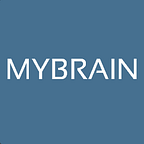Marijuana and Your Brain, Part Two
Editor’s Note: This is the second article in a series on marijuana (cannabis) use and brain health. The first article reviewed medical research on cannabis to control pain and muscle spasms associated with multiple sclerosis.
A fascinating and ever changing intersection between science, medical research, and public policy regarding the wave of marijuana legalization has prompted us to take a closer look at the actual evidence for how marijuana use affects the human central nervous system (also known as your brain).
The Human Endocannabinoid System
Our bodies naturally produce chemicals that are closely related to tetrahydrocannabinol (THC) and cannabidiol (CBD), the main agents found in marijuana. THC is the mind altering “psychoactive” component of marijuana, while CBD is a chemical compound with a range of interesting antioxidant, neuroprotective and anti-inflammatory properties.
The human body has two types of cannabinoid receptors — CB1 and CB2:
Human cannabinoid receptors can have a range of action on memory formation, mood and sleep regulation, eating and appetite control, pain tolerance, and immune/inflammatory response.
Anandamide and 2-AG are the primary endocannabinoids that our bodies produce. Anandamine is present in dark chocolate, which likely accounts for the calmness and mild euphoria many people feel when they have a piece of chocolate.
Cannabinoid Receptors in the Brain
There are a number of locations in the brain that contain cannabinoid receptors (mainly CB1 receptors):
A quick look at these brain regions with CB1 receptors helps explain how many of the well-known effects from marijuana are produced, including:
– a general feeling of calmness (anxiolytic properties)
— a reduction in the perception of physical pain (analgesic properties)
— episodic memory impairment (short term amnesia)
— a change in motor control, balance and coordination ability (typically reduced)
There are a number of new studies that have launched in the past year to apply proper scientific rigor to the potential benefits of using marijuana extracts to treat a number of neurocognitive conditions beyond multiple sclerosis, including post-traumatic stress (PTSD) symptoms, reducing epilepsy related seizures, and resolving sleep disorders.
Can Marijuana Become a Standard Health Care Product?
One of the challenges to overcome is how to translate the “product” from a creative cottage industry of marijuana production into necessary medical standards and oversight for “routine” health care. This would include formal (and expensive) clinical trials to fully understand the benefits and risks to patients.
This is not a trivial challenge — a close analogy is the generic pharmaceutical industry, where consumers have reasonable assurance that the medication they are taking is always the same dosage and quality, no matter where it was produced.
The next article in this series will address the relative addiction risk of habitual marijuana use, and the potential unintended consequences of marijuana on the developing adolescent brain.
Read also: Is Gluten Bad for Your Brain Health? .
Originally published at www.mybraintest.org on November 4, 2015.
